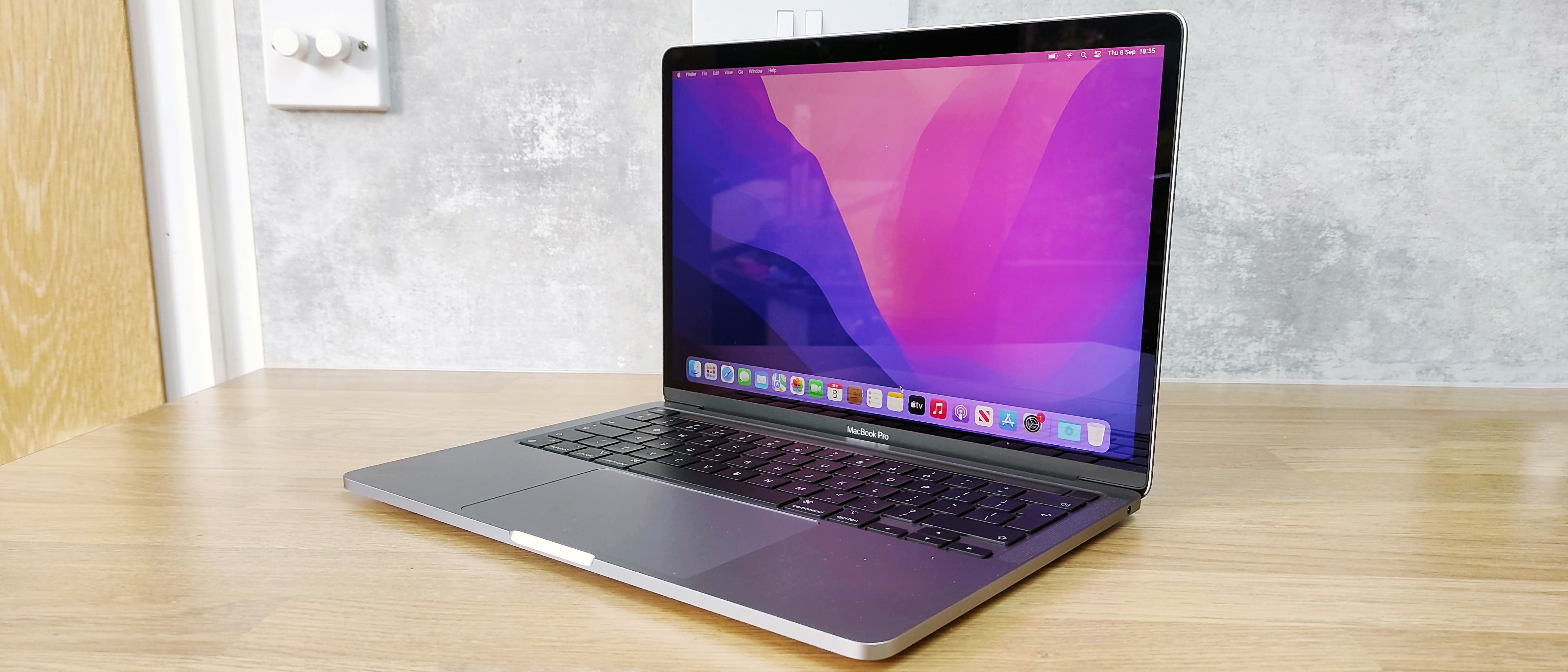Digital Camera World Verdict
The MacBook Pro has always been an easy sell for anyone wanting a highly portable, exquisitely well made laptop that performs brilliantly and sports a stunning screen. The M2 MacBook Pro is all of these things, and with prices starting at a very fair $1,299/£1,349, it's excellent value for money, especially when compared to the pricier 14-inch and 16-inch MacBooks. However, there are compromises to be made. We found the 13.3-inch screen to be a little small for extended periods of editing, and with just two USB ports (one taken by the charger), a dongle is an inconvenient necessity.
Pros
- +
Great screen quality
- +
Superb performance
- +
Excellent portability
Cons
- -
2 ports isn't enough
- -
Little benefit over M2 Air
- -
13" screen size not ideal
Why you can trust Digital Camera World
The latest MacBook Pro may look just like its predecessor, but it's the first to pack Apple's second-generation 'M2' System on Chip, promising up to a 40% performance increase over the original 13-inch M1 MacBook Pro. The Apple M2 silicon is an 8-core design with a unified 10-core GPU, available with 8GB, 16GB, or 24GB RAM (a useful increase from the original M1 MacBook Pro, which topped out at 16GB).
Could the 13-inch M2 MacBook Pro be the best photo-editing laptop?
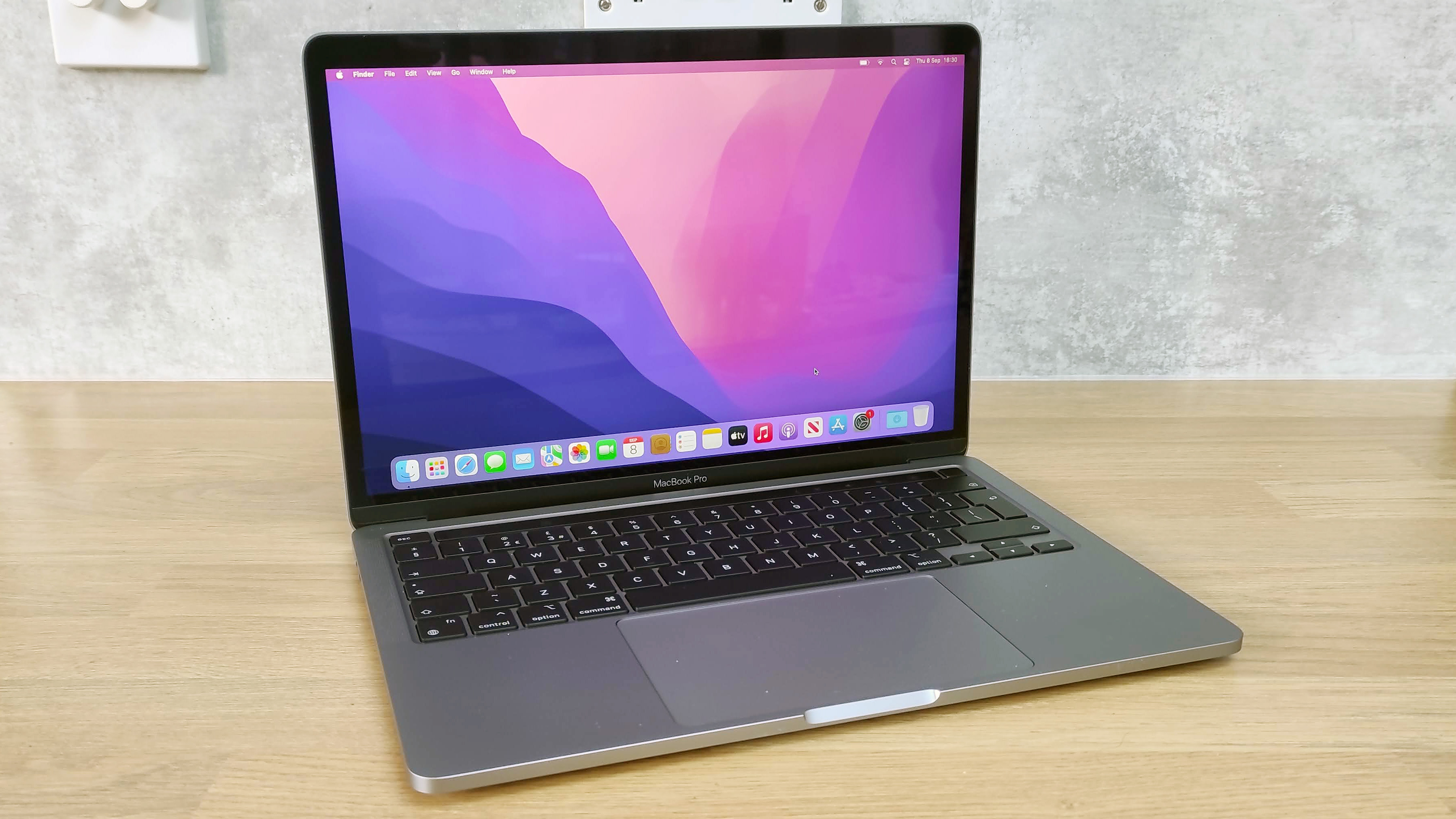
Specifications
• CPU: Apple M2 8-core CPU
• Graphics: Integrated 10-core GPU
• RAM: 8-24GB Unified memory
• Screen: 13.3-inch Liquid Retina display with True Tone
• Storage: 256GB – 2TB SSD
• Ports: 2x Thunderbolt 4 (USB 4.0 Type-C), 3.5mm headphone jack
• Connectivity: Wi-Fi 6, Bluetooth 5.0
• Camera: 720p FaceTime HD webcam
• Weight: 2.7 pounds (1.24kg)
• Size: 11.97 x 8.36 x 0.61 inches (30.41 x 21.24 x 1.4cm); W x D x H
Key features
If you're familiar with 2020's M1 MacBook Pro, the latest M2 version is, superficially at least, more of the same. You still get a huge trackpad with pressure-sensitive Force Touch, Apple's backlit Magic Keyboard with scissor key switches, and perhaps surprisingly, a Touch Bar. Despite waning support for this once-flaunted feature, it's still present on the M2 MacBook Pro, providing an interesting alternative to a 'conventional' touchscreen display.
• Best MacBooks right now
• The Best photo editing laptops
• The Best laptops for video editing
• Best Mac printer
• Best Mac webcam
Also carried over from the M1 'Pro is the 720p FaceTime camera - an odd choice, given the M2 MacBook Air gets a 1080p camera. The lower-res camera does mean there's no notch in the top of the screen viewing area though - a 'feature' that is present on the 'Air, and one which can take some getting used to.
Elsewhere, the increased power efficiency of the M2 chip enables up to 20 hours battery life – impressive, given Apple claims the power of the M2 can handle up to 11 streams of 4K ProRes video, or 2 streams of 8K footage.
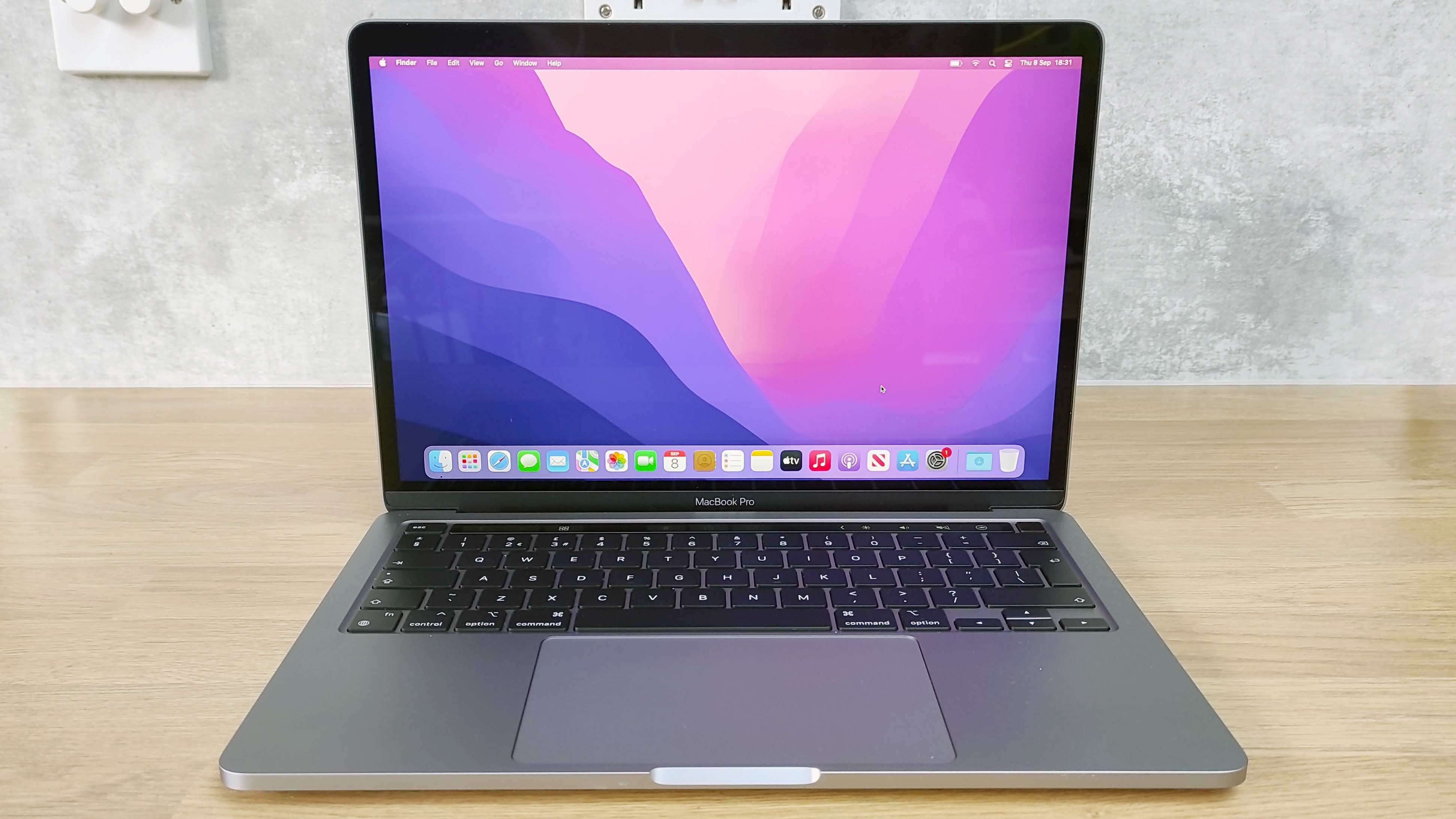
Storage ranges between 256GB and 2TB, but most impressive for photographers is the gorgeous 13.3-inch 2560 x 1600 Retina display. This is an IPS LCD panel capable of a high 500-nit maximum brightness and extensive DCI-P3 color space coverage. The only potential drawback is the relatively small 13.3 inch size, which regardless of the high resolution could still prove uncomfortably small for longer image/video editing sessions.
Build and Handling
As we've come to expect from modern MacBook Pro's, this is an exceptionally svelte and portable machine. At 1.4kg light and 1.56cm in thickness, it's barely more than the 1.24kg/1.13cm M2 MacBook Air. Despite being so slim, Apple's build quality is sublime as usual, with no discernible flex or creaks in the device.
However, while the slimness may be great news for portability, it does result in pathetic physical connectivity: just two Thunderbolt/USB 4 Type-C ports. Given that one of these is required to connect the charger, this leaves you with just a single port for connecting peripherals. Realistically a separate dongle will therefore be required, at a hefty extra expense if you go for Apple's own USB-C Digital AV Multiport Adapter, and carrying this around will somewhat negate the slim form factor of the laptop itself.
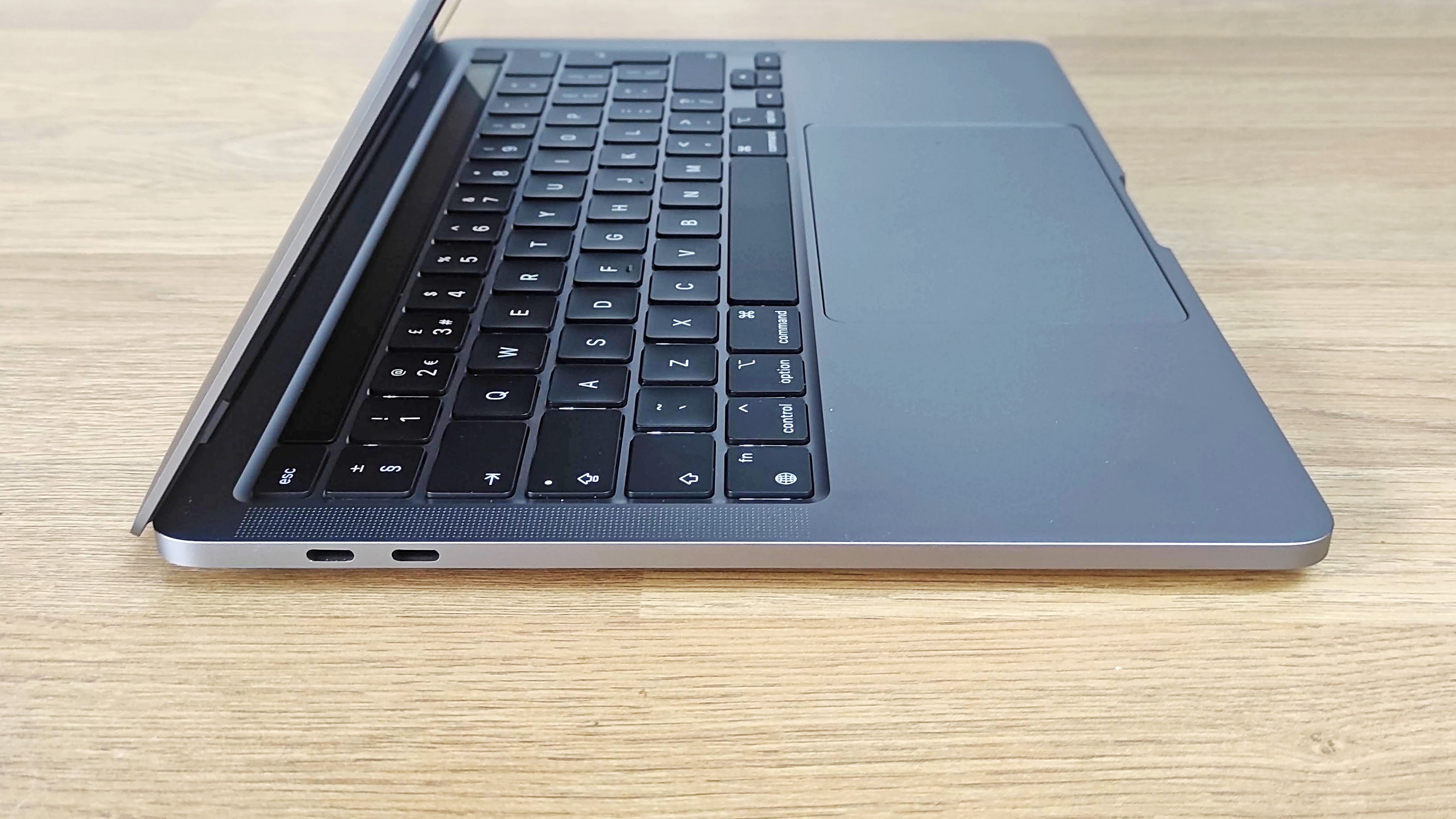
Of course this isn't an issue unique to the M2 MacBook Pro, but what is distinct to the new 'Pro is its somewhat strange screen setup. Perhaps due to the mixed feedback on the M2 Air's notched display, the M2 Pro actually has a slightly smaller 13.3 inch panel (compared to 13.6 inch for the Air). This does away with a need for a notch, as the webcam is contained completely in the top bezel, but it also means those bezels are necessarily thicker and therefore more unsightly. It also means the 13-inch MacBook Pro now has a slightly smaller screen than the 13-inch MacBook Air, in addition to its lower resolution webcam.
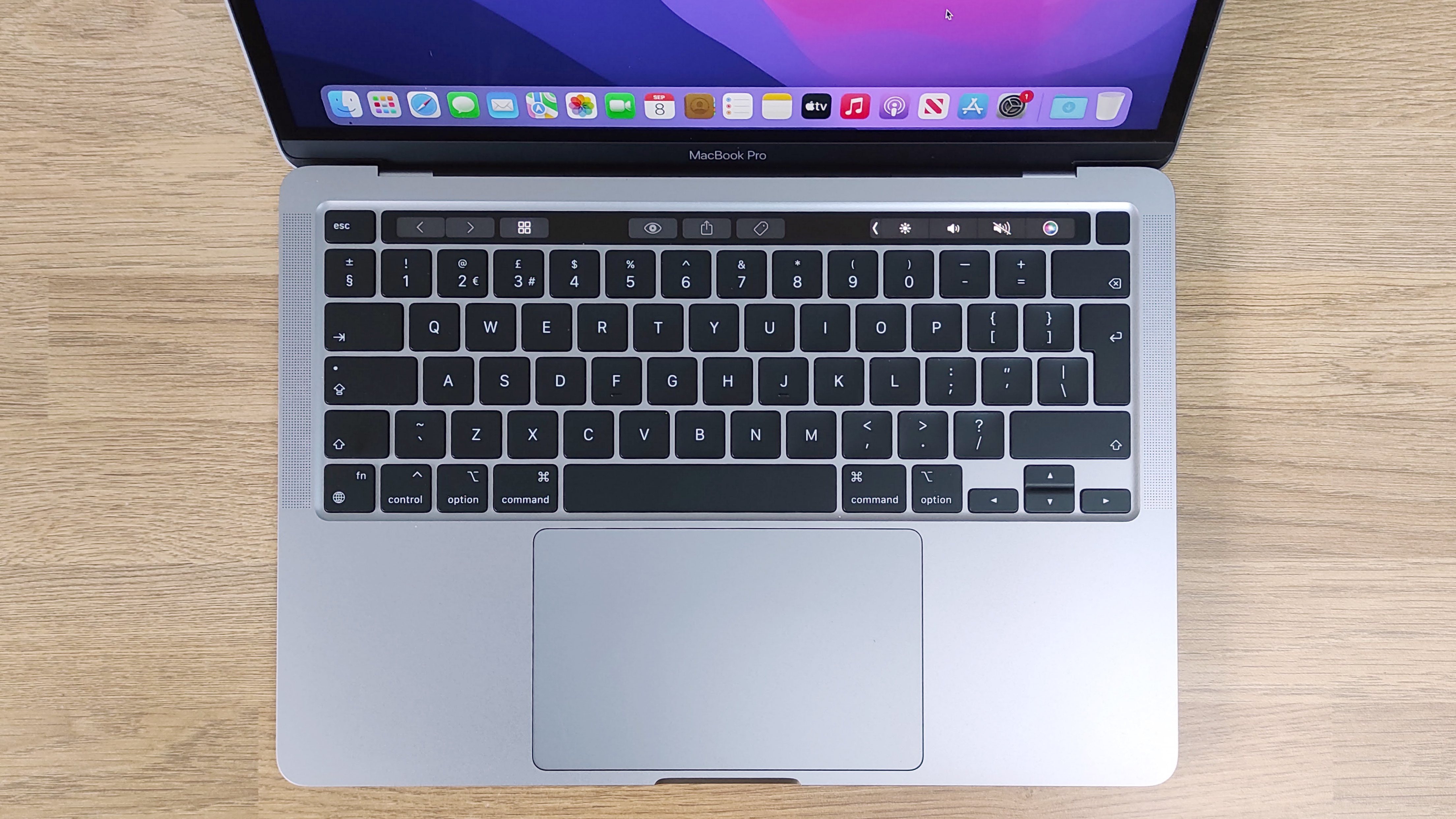
But in the Pro's favour, you do get Apple's Touch Bar. This thin touch-sensitive strip dynamically changes its touch buttons according to the open app, giving you buttons and sliders relevant to what you're currently working on. A few years ago the Touch Bar was Apple's next big thing, touted as being a worthwhile alternative to a conventional full-on touch screen. However these days Apple is gradually omitting it from its laptops, and now the 13-inch M2 Pro is the only current MacBook to include the Touch Bar. Whether that's a benefit for you of course depends on whether you've learnt to incorporate it into your workflow, but I find it a genuinely useful feature when using the laptop on the go.
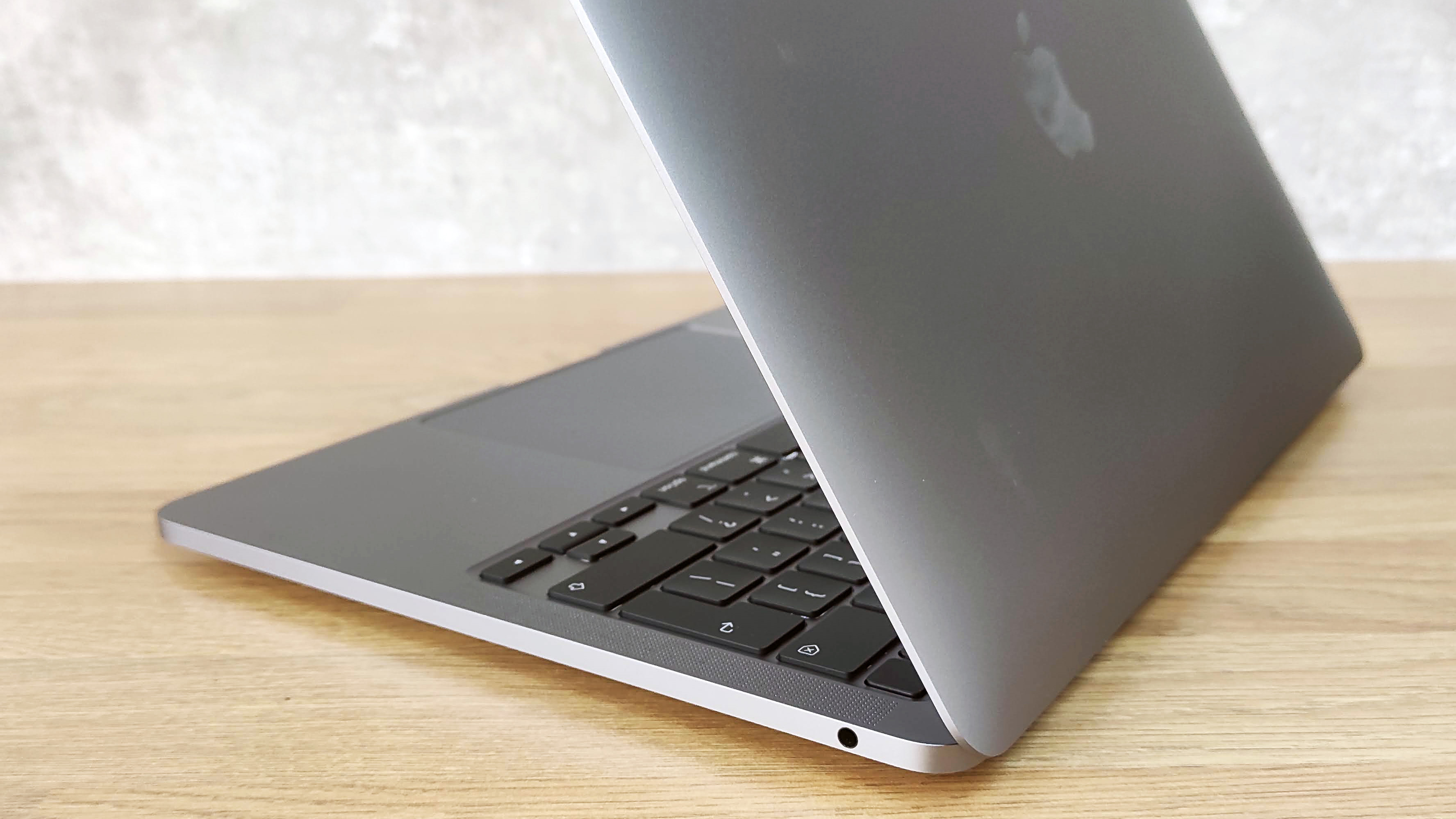
Performance
With a supposed 40% performance increase over the original M1 MacBook Pro, I had high hopes for the speed of the M2 'Pro. In terms of simple benchmark performance, a Cinebench R23 score of 8720 is impressive, though not as fire-breathingly fast as Apple's marketing hype may lead you to expect. I benchmarked the M2 Pro alongside my own desktop PC daily driver. Though approaching 10 (yes, 10!) years old, its quad-core Intel Core i7 2700K processor was once the pinnacle of desktop PC performance, and thanks to being overclocked from 3.5GHz to 4.6GHz, this PC is still able to do everything I need it to in 2022. It's also interesting to see how a modern ultra-portable laptop can compare in performance to a hulking great performance-centric desktop tower. For perspective, the PC scored 4407 in Cinebench, making the little MacBook nearly twice as fast.
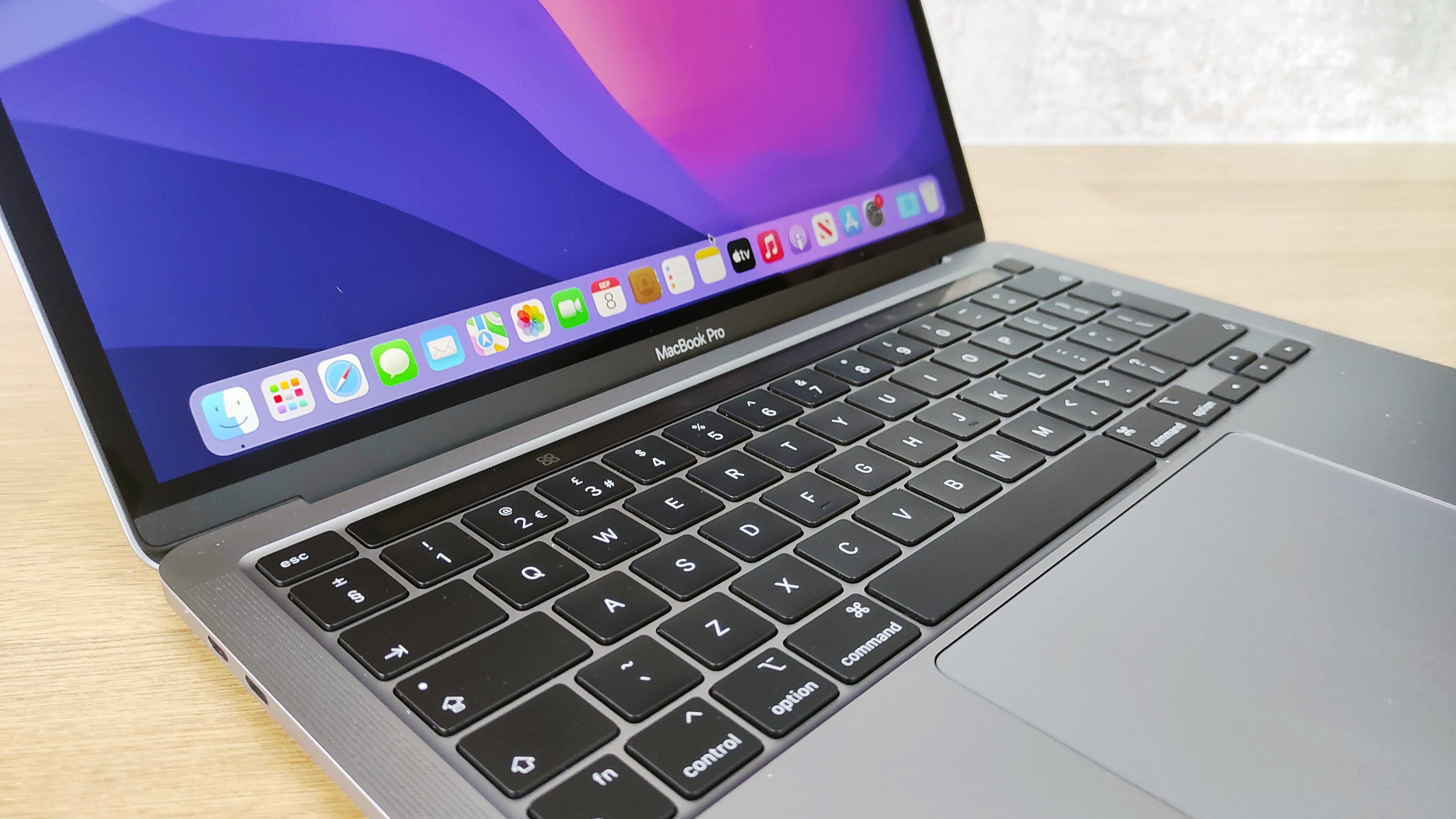
For a more real-world performance test, I installed the latest version of Photoshop on both machines and loaded up a massive 885MB, 538-megapixel stitched panorama to really put the 'Pro through its paces. The MacBook took 14 seconds to open the file (versus 20.77 seconds for the PC). However, the M2's performance truly came to the fore when I applied an HDR Toning adjustment. This took a painfully slow 2 minutes 19 seconds on the PC, but the MacBook managed it in just 52.45 seconds. I also tried opening 50 12MP JPEGs all at once into Photoshop, which the MacBook again performed over twice as quickly, taking 14.71 seconds, compared to the PC's 33.81 seconds. With the M2's processing cores pegged at 100% usage, the chip's cooling fan did spin up to an audible level, but was always quiet and never distracting.
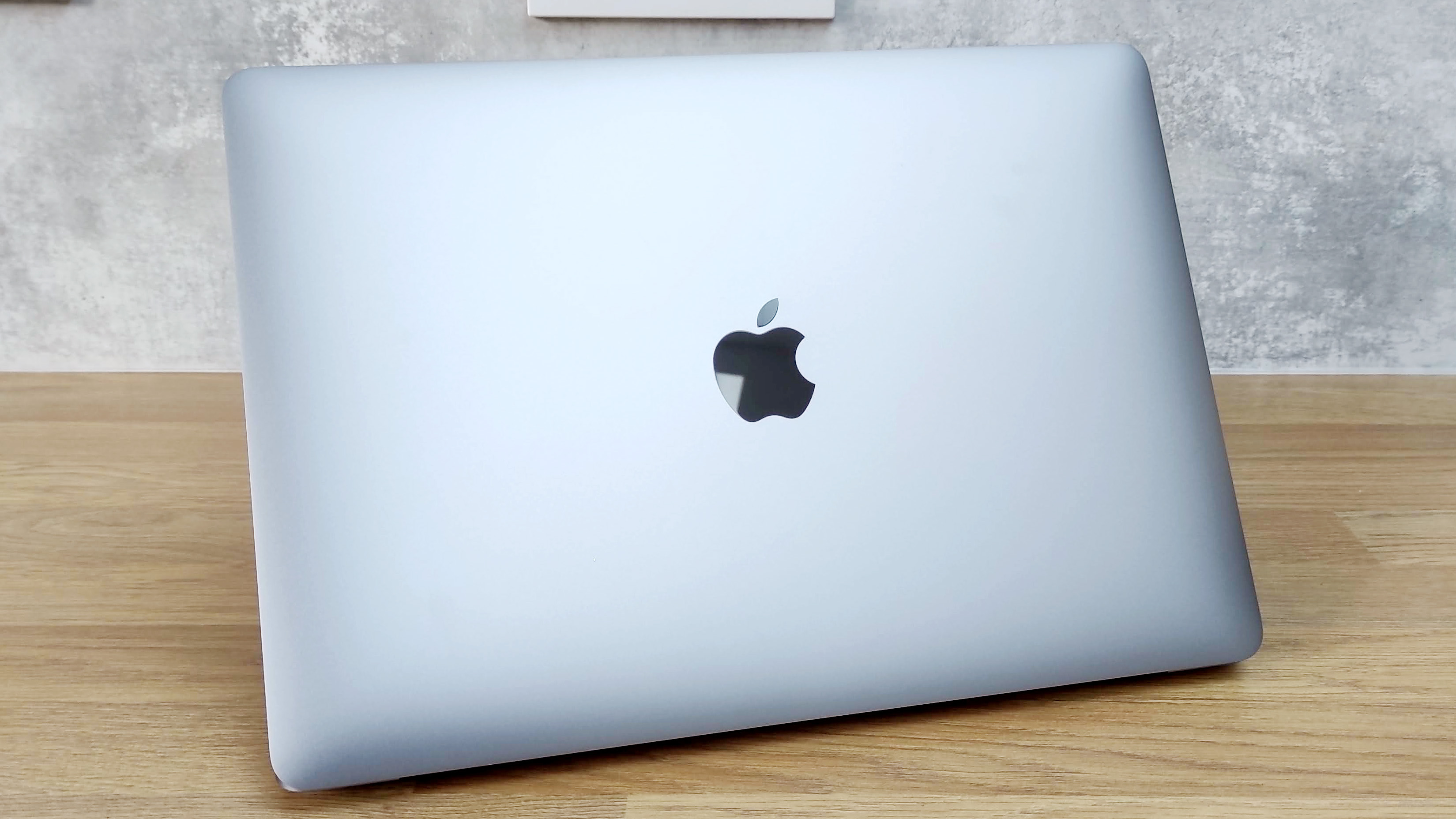
Given that both machines pack 16GB RAM, and the PC is equipped with a reasonably fast Samsung 850 SSD, it's clear that the M2 silicone and its integrated memory offer clear performance benefits. And not just in raw performance. What's perhaps most remarkable is the smoothness of the M2 Pro. Simply zooming in and out of a high-res JPEG photo is silky smooth, with no lag or rendering delay when switching between different image magnification sizes. Contrast this with the PC, where the same image would take half a second to display when changing magnification, and would render more gradually, in distinct tiles.
Screen quality has always been a particularly strong aspect of MacBooks, and the M2 Pro is no exception. Color accuracy, backlight consistency and color space coverage are all excellent, and the 2560 x 1600 resolution is exceptionally high for a screen of this size, easily hiding the outline of individual pixels at normal viewing distances.
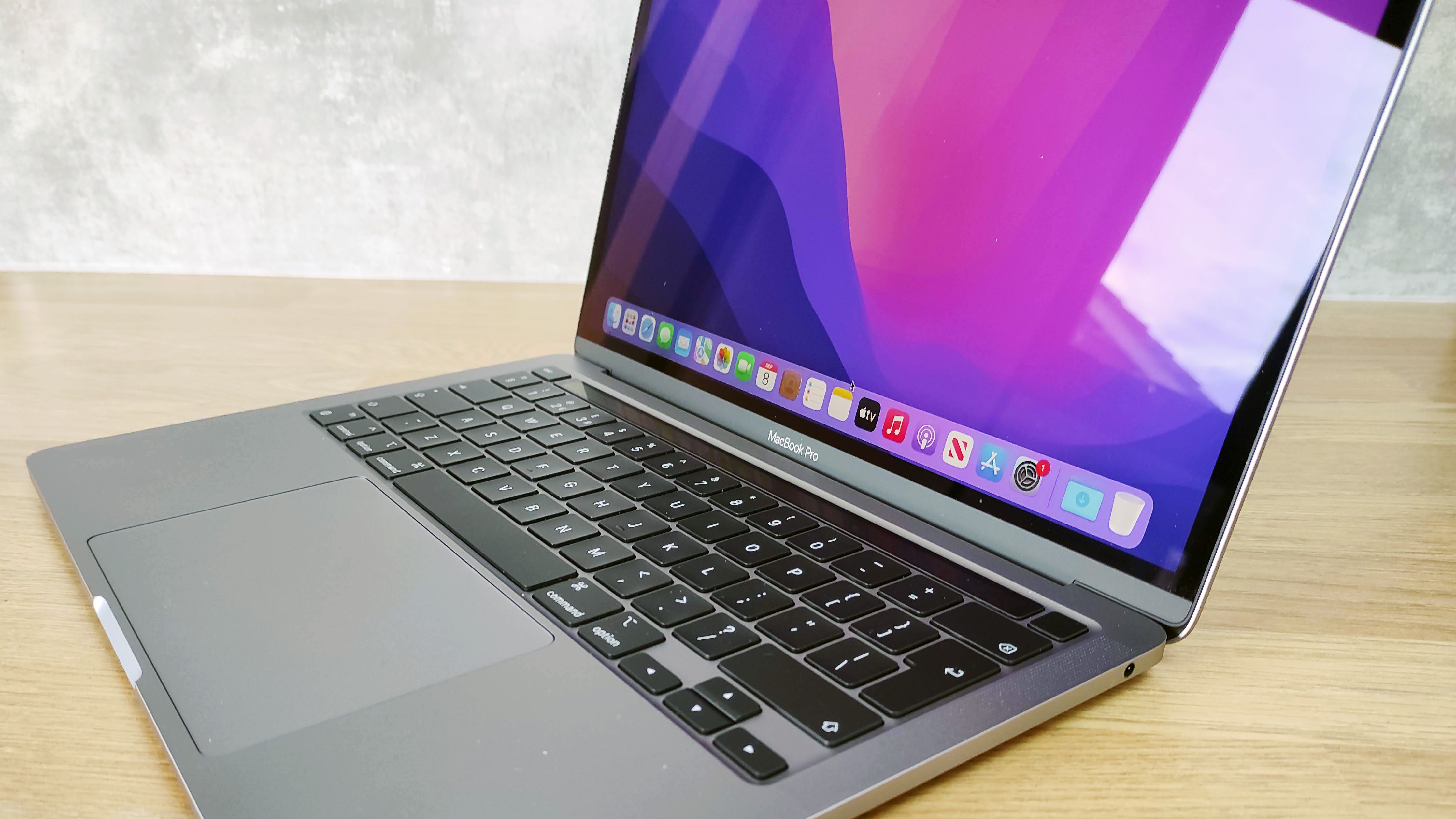
Another laptop performance metric that often receives little attention is audio quality. The M2 Pro's sound processing produces a particularly expansive effect that results in a sound stage far larger than you'd expect from such a compact laptop. Of course there's no getting around the fact that the speaker drivers are inevitably small and therefore cannot produce any real bass, but listening to music on the 'Pro's built-in speakers is still a surprisingly pleasing experience.
Verdict
If you're after an ultra-portable, yet high-performing laptop that can take on pretty much any image or video editing task you could throw at it, the M2 MacBook Pro is well worth considering. It's got impressive reserves of raw performance, but also offers a wonderfully smooth, effortless computing experience when you're not demanding every ounce of firepower. It's also an exquisite item in its own right, with top-notch build quality, a sublime screen and surprisingly decent sound quality. Even the Touch Bar is a welcome inclusion for us, though likely not for everyone.
However unlike some previous MacBook Pros, the 13-inch M2 Pro isn't something we can unreservedly recommend. Its selection of physical ports is, frankly, appalling. While a laptop like the MacBook Air can get away with this on account of its super-thin portability, a MacBook 'Pro' should place greater emphasis on usability and practicality - factors which simply can't be satisfied by just two Type-C ports, one of which is required for the charger.
Having a slightly smaller screen, and a lower resolution webcam, than the M2 Air is also a difficult pill to swallow when the Pro should, in theory, be better specced to compensate for its extra bulk. That 13.3 inch screen size is also something you need to seriously consider before buying. If you're going to be using this on the go, it makes a lot of sense, but if you’ll be spending a lot of time working at home/in the office, and without an external monitor, a larger 16-inch MacBook provides a significantly more comfortable viewing experience for pallet-heavy apps like Photoshop and Lightroom, albeit for a lot more money.
Read more:
• Best MacBooks
• Best student laptops
• Best Chromebooks
• Best Ultrabooks
• Best photo editing laptops
• Best laptops for video editing
• Best desktop computers
• Best Mac printer
• Best Mac webcam
• Best external hard drives
• Best monitors for photo editing
• Best USB-C hubs
Ben is the Imaging Labs manager, responsible for all the testing on Digital Camera World and across the entire photography portfolio at Future. Whether he's in the lab testing the sharpness of new lenses, the resolution of the latest image sensors, the zoom range of monster bridge cameras or even the latest camera phones, Ben is our go-to guy for technical insight. He's also the team's man-at-arms when it comes to camera bags, filters, memory cards, and all manner of camera accessories – his lab is a bit like the Batcave of photography! With years of experience trialling and testing kit, he's a human encyclopedia of benchmarks when it comes to recommending the best buys.
